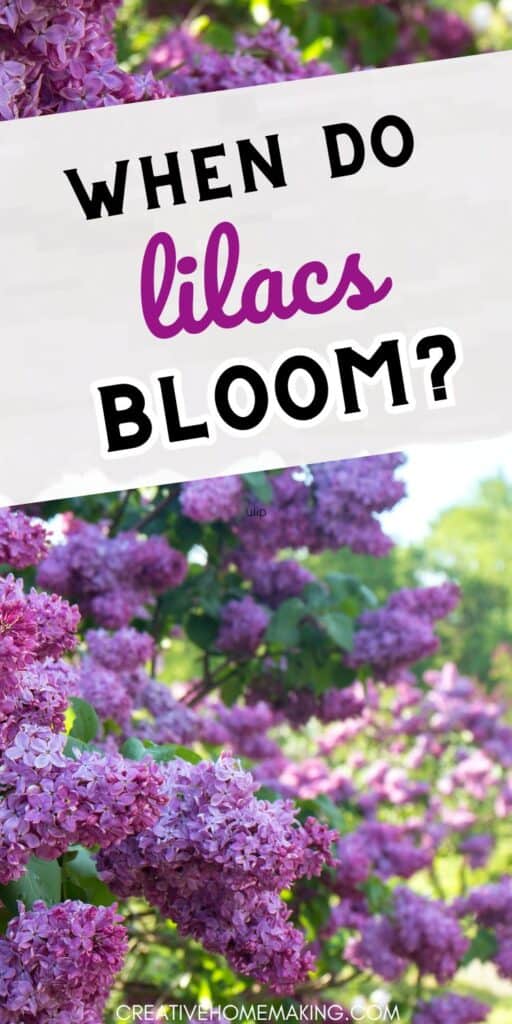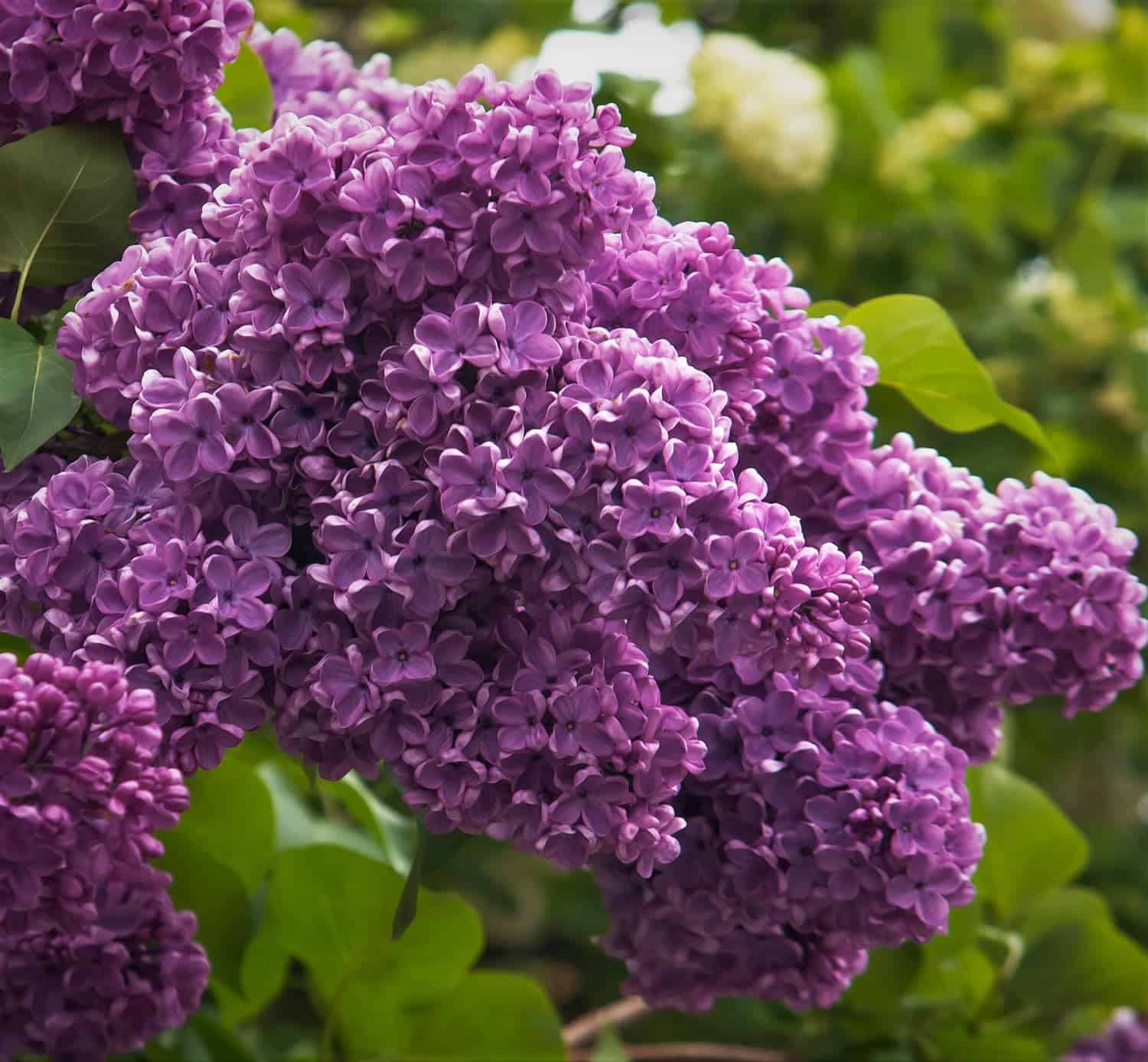Are you eagerly waiting for the lilacs to bloom this spring? Lilacs are a popular flowering shrub known for their fragrant and beautiful blooms.
This post may contain affiliate links.
They are a symbol of spring and are eagerly awaited by gardeners and flower enthusiasts alike. But when exactly do lilacs bloom?
The bloom time of lilacs can vary depending on several factors, including the weather, location, and the specific variety of lilac. Generally, lilacs bloom in the spring, typically in late April or early May.
Related Article: Lilacs Not Blooming: Possible Reasons and Solutions
However, the bloom time can vary by a few weeks depending on the climate and location. In warmer climates, lilacs may bloom earlier, while in colder climates they may bloom later.
Keep reading to learn more about the factors that influence lilac bloom time and how to care for your lilacs to ensure a beautiful display of blooms in the spring.
Understanding Lilacs
Lilacs are beautiful and fragrant flowers that are popular for their ornamental value. They are a part of the olive family and are native to Europe and Asia. Lilacs are easy to grow and care for, making them a popular choice for gardens and landscapes.
In this section, we will discuss the botanical profile of lilacs and the different varieties of lilacs.
Related Article: How to Grow Lilacs from Cuttings: A Beginner’s Guide
Botanical Profile
Lilacs belong to the genus Syringa and the species Syringa vulgaris. They are deciduous shrubs that can grow up to 20 feet tall.
Lilacs have oval-shaped leaves and produce clusters of flowers that are usually purple, pink, or white. The flowers have a sweet fragrance and bloom in the spring.
Spectacular Purple Lilac Potted Plant, 6-12″ Tall
Varieties of Lilacs
There are many different varieties of lilacs, each with its own unique characteristics. Some of the most popular varieties include:
- Common Lilac (Syringa vulgaris): This is the most popular variety of lilac. It produces large clusters of fragrant flowers in shades of purple, pink, and white.
- Persian Lilac (Syringa reticulata): This variety has a more open growth habit and produces clusters of white or pale pink flowers.
- Littleleaf Lilac (Syringa microphylla): This variety has smaller leaves and produces clusters of pink or purple flowers.
Lilacs are also available in a variety of sizes, from dwarf varieties that only grow a few feet tall to large shrubs that can reach up to 20 feet in height.
Planting and Growing Lilacs
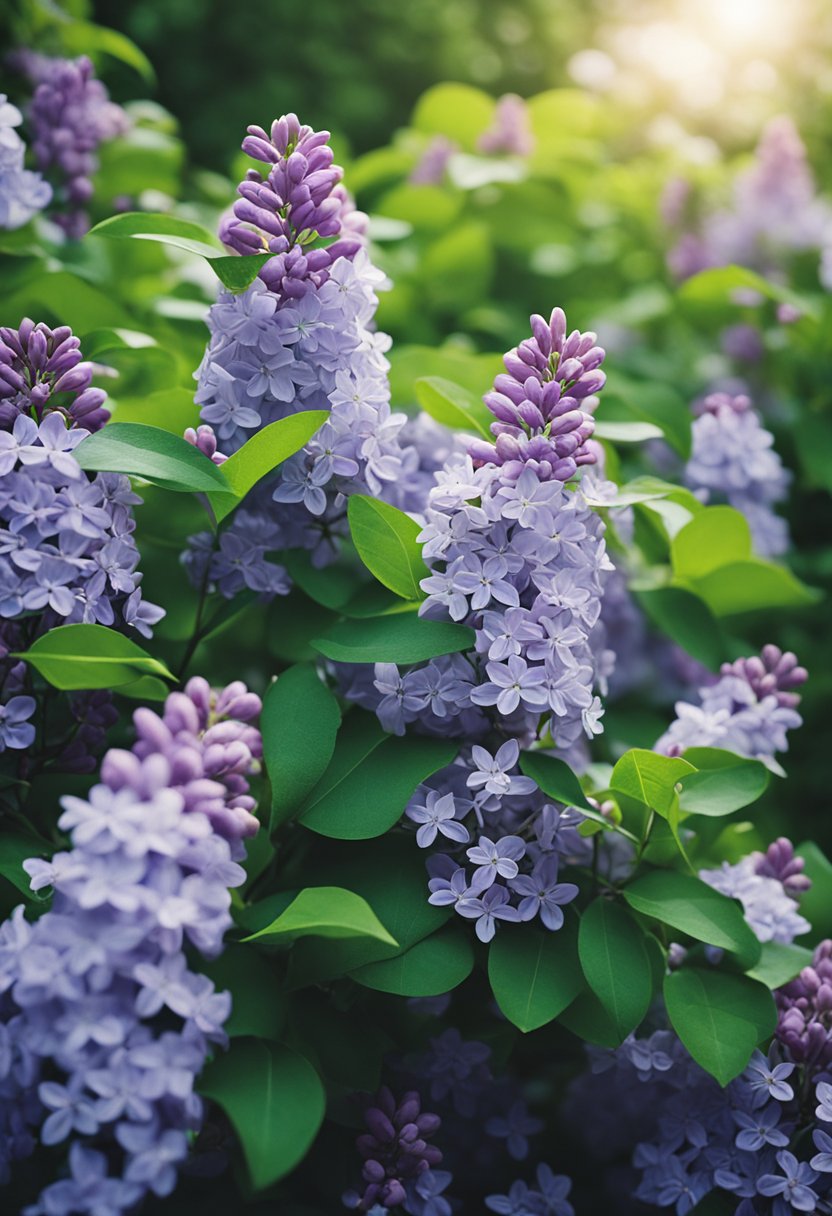
Lilacs are a beautiful addition to any garden, and their fragrant blooms make them a popular choice for many gardeners. If you’re considering planting lilacs in your garden, here are some tips to help you get started.
Choosing the Right Location
When choosing a location for your lilacs, it’s important to consider their sunlight needs. Lilacs prefer full sun, so choose a spot that gets at least six hours of direct sunlight each day. They also need well-drained soil with a pH between 6.0 and 7.0.
If your soil is too acidic, you can add lime to raise the pH level. You can easily measure the pH level of your soil with an inexpensive soil pH meter.
Related Article: Are Lilacs Edible? Discover the Answer Here
Soil and Planting Guidelines
Before planting your lilacs, prepare the soil by removing any weeds or debris and adding compost or other organic matter. Dig a hole that is twice as wide and deep as the lilac’s root ball.
Place the plant in the hole and backfill with soil, making sure to tamp it down firmly to eliminate any air pockets.
When planting multiple lilacs, space them at least 5 feet apart to allow for proper air circulation. Water the plants thoroughly after planting and continue to water them regularly until they become established.
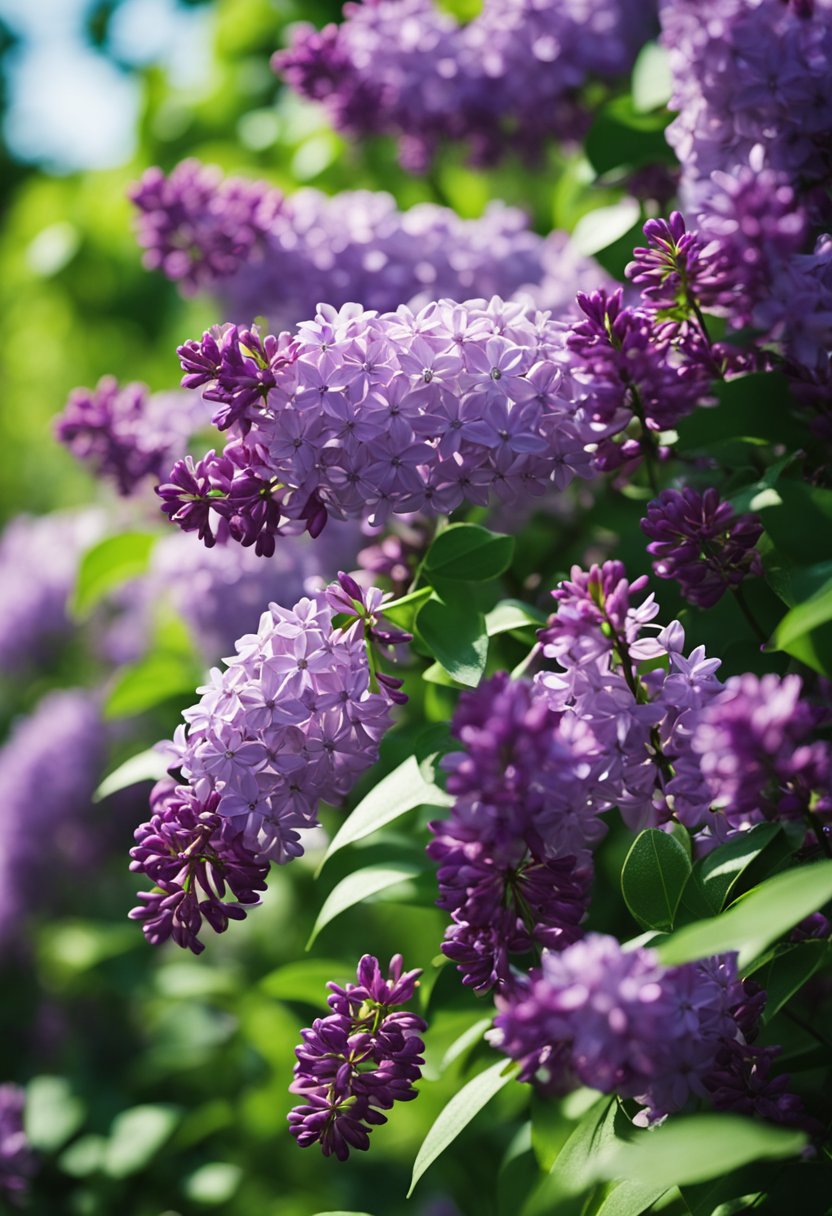
Watering and Nutrition
Lilacs need regular watering, especially during dry spells. Water deeply once a week, making sure the soil stays moist but not waterlogged. Fertilize the plants in early spring with a balanced fertilizer to promote healthy growth and blooming.
Caring for Lilacs
Lilacs are beautiful and fragrant flowers that bloom in the spring. They are easy to care for and can be enjoyed for years with proper maintenance. Here are some essential tips for caring for your lilacs.
Pruning Essentials
Pruning is an essential part of caring for lilacs. It helps to promote healthy growth and maintain the shape of the plant. Prune your lilacs in the late spring or early summer after they have finished blooming.
Remove any dead or diseased wood, and cut back any branches that are crossing or rubbing against each other. This will help to improve air circulation and prevent disease.
Pest and Disease Management
Lilacs are generally hardy plants, but they can be susceptible to pests and diseases. Keep an eye out for borers, which can cause damage to the stems and branches. If you notice any signs of borers, prune the affected branches and dispose of them.
Lilacs can also be prone to powdery mildew and bacterial blight. To prevent these diseases, make sure your lilacs are planted in well-draining soil and avoid overhead watering. If you do notice any signs of disease, remove the affected leaves or branches and dispose of them.
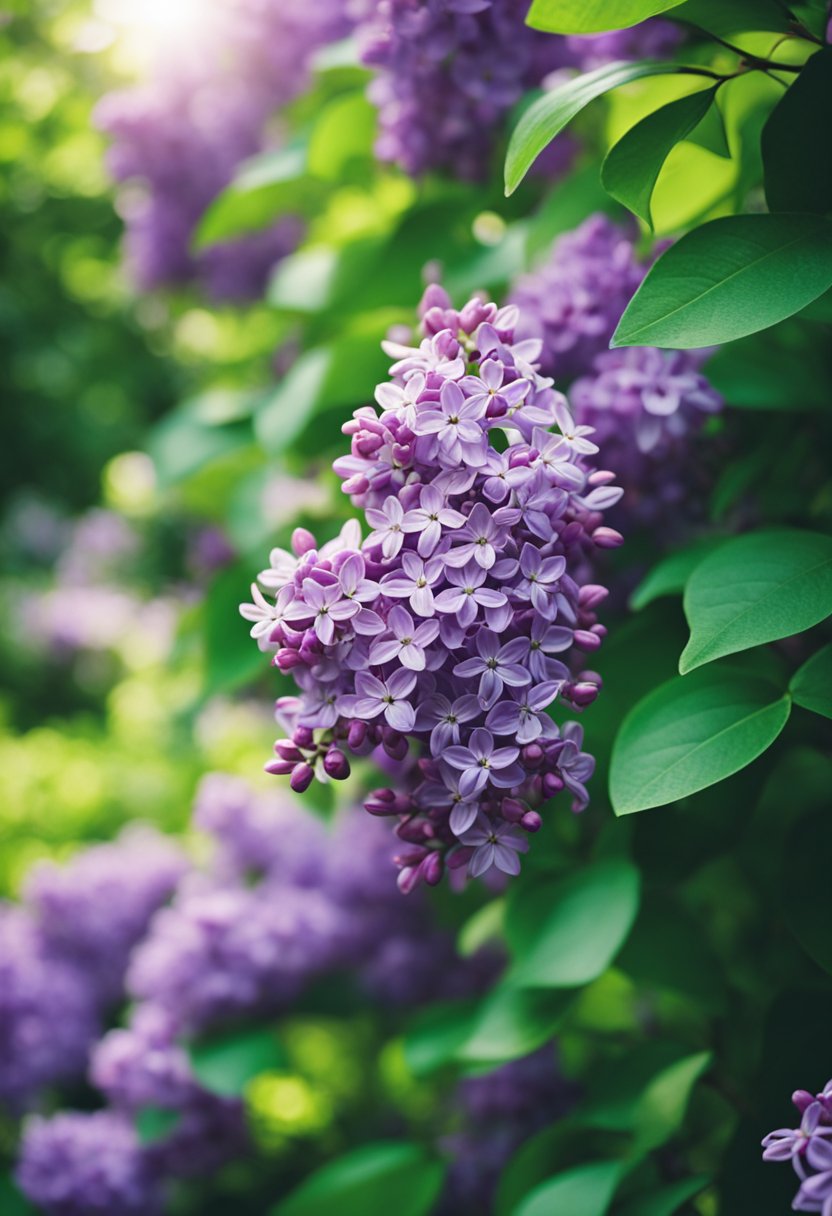
Seasonal Maintenance
Lilacs require minimal maintenance throughout the year. In the spring, fertilize your lilacs with a balanced fertilizer. In the summer, apply a layer of mulch around the base of the plant to help retain moisture and suppress weeds.
Deadhead your lilacs throughout the summer to encourage more blooms. In the fall, remove any fallen leaves or debris from around the base of the plant to prevent disease.
Lilac Blooming Period
Lilacs are beautiful flowering shrubs that are known for their fragrant blooms. If you’re wondering when to expect blooms from your lilac bushes, here’s what you need to know.
When to Expect Blooms
Lilacs typically bloom in late spring to early summer, depending on the specific variety and your location. Flower buds will start to form in the fall, and then go dormant during the winter months.
As the weather warms up in the spring, the buds will start to swell and eventually burst open into beautiful blooms.
If you’re not sure when your lilacs will bloom, pay attention to the temperature. Lilacs need a certain number of “chill hours” (hours below 45°F) in order to bloom properly. Once they’ve received enough chill hours, they’ll be ready to bloom when the weather warms up.
Encouraging Reblooming
If you want your lilacs to rebloom, there are a few things you can do. First, make sure to deadhead (remove) the spent blooms as soon as they start to fade. This will encourage the plant to put its energy into producing new blooms instead of seeds.
You can also fertilize your lilacs in the spring with a balanced fertilizer to encourage new growth and blooming. Just be careful not to over-fertilize, as this can lead to excessive growth and fewer blooms.
Finally, if you have an older lilac bush that isn’t blooming as well as it used to, you may need to prune it back. Lilacs bloom on old wood, so if your bush is getting too big and woody, it may not produce as many blooms.
Prune it back in the late summer or early fall to encourage new growth and more blooms next year.
Frequently Asked Questions
What month do lilac flowers typically bloom?
Lilac flowers typically bloom in the spring, usually between late April and early June. However, the exact time can vary depending on the specific type of lilac, as well as the climate and location where it is growing.
How can I get my lilacs to bloom twice a year?
It is not possible to get lilacs to bloom twice a year. Lilacs are a spring-blooming shrub, and their blooming period lasts only a few weeks. However, you can plant different types of lilacs with varying bloom times to extend the overall blooming period in your garden.
Why might my lilac bushes not be blooming?
There are several reasons why your lilac bushes may not be blooming. One common reason is that they are not getting enough sunlight. Lilacs require at least six hours of direct sunlight per day to bloom.
Other reasons include improper pruning, over-fertilization, or damage from pests or disease.
How long is the blooming period for lilac flowers?
The blooming period for lilac flowers typically lasts for two to three weeks, depending on the specific type of lilac and the climate where it is growing. During this time, the flowers will produce a strong, sweet fragrance that is beloved by many.
Can a lilac bush bloom all summer?
No, a lilac bush cannot bloom all summer. Lilacs are a spring-blooming shrub, and their blooming period lasts only a few weeks. However, you can plant different types of lilacs with varying bloom times to extend the overall blooming period in your garden.
What are the conditions for lilacs to bloom in the fall?
Lilacs do not typically bloom in the fall. They are a spring-blooming shrub and require a period of cold dormancy during the winter months in order to bloom.
However, some lilac varieties may produce a secondary flush of blooms in the late summer or early fall, particularly if they are grown in a cooler climate.
Follow my lilacs board on Pinterest.

